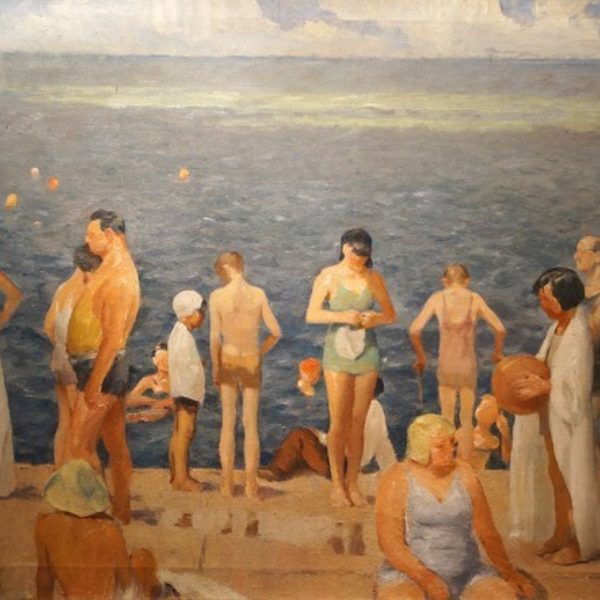Sam Malmberg
b. 1892, Stockholm, Sweden - d. 1965, Chicago, IL
Born in Sweden in 1892, Sam Malmberg immigrated to the United States in 1908 and settled in Chicago by the outbreak of World War I. Like many Swedish immigrant artists, Malmberg probably arrived in the US with little formal artistic training. In the early twentieth century, Chicago was home to a large, vibrant community of Swedish artists, such as fellow countryman and contemporary Gustaf Dalstrom, and Malmberg would have had many opportunities to encounter their work in exhibitions organized by the Swedish-American Art Association, the Swedish Club of Chicago, as well as at the Art Institute of Chicago and other venues.
Malmberg supported himself from the late teens through the mid-1940s by working as a commercial artist for advertising and outdoor sign companies, while pursuing his ambitions as a fine art painter. Between 1932 and 1944 Malmberg showed his paintings in annual exhibitions at the Art Institute. His 1931 travels to Tahiti inspired him to produce a number of watercolors that were featured in the museum’s International Water Color Exhibition of 1932, including Cocoanut [sic] Palms, Native Activity, and Vahine, Tahiti. Malmberg also worked in figure and portrait compositions, winning a prize for his “expressive” Portrait of a Young Man in a 1935 Chicago Galleries exhibition.
Lakefront Bathers likely dates from this active period during the mid-1930s: a work entitled Bathers was shown at the Art Institute in 1934. In the Friedman collection painting, Malmberg captured a cross-section of urban dwellers enjoying a respite from the city’s heat along the shoreline. Men, women, and children—some fully dressed, others in swimsuits—sit and stand along the lakefront, while others swim in the water beyond. The scene purports to be a casual snapshot of daily life, yet the frieze-like arrangement of flesh-colored figures, the distinctive horizontal bands of the concrete path, bluish-grey water, and sky, and the colorful accents of the bobbing heads in the lake, result in a highly decorative composition. Malmberg individualized his figures through their physical attributes and clothing, yet he also idealized them in a hieratic manner through their simplified shapes and lack of distinctive facial features.
Malmberg showed his oil painting At the Bend in the Road at the Swedish Club of Chicago in 1949–50, but appears not to have exhibited his work after this time. He died tragically from burns suffered when a smoldering cigarette set fire to his bed in November 1965.
Patricia Smith Scanlan
References
“Among Swedish Artists in Chicago.” Svenska Tribunen-Nyheter. December 28, 1921. Foreign Language Press Survey. Newberry Library. http://flps.newberry.org/article/5423404_2_1439/ (accessed September 11, 2013).
Falk, Peter Hastings, ed. The Annual Exhibition Record of the Art Institute of Chicago, 1888–1950. Madison, CT: Soundview Press, 1990.
Falk, Peter Hastings, ed. Who Was Who in American Art 1564–1975: 400 Years of Artists in America. Vol. 2. Madison, CT: Soundview Press, 1999.
Jewett, Eleanor. “Galleries Give Prizes to Four Local Artists: Tellander, Malmberg, Ryder, and Dabrowski Honored for Work.” Chicago Daily Tribune. December 29, 1935.
Misc. references for Samuel Malmberg on Ancestry.com (immigration, census, draft registration cards, etc), accessed September 9, 2013.
